Words by Zach Weisberg, Founder of TheInertia.com

The Inertia Founder Zach Weisberg enjoying a surf at the Wavegarden test facility. Photo: The Inertia
Sixty cents. It costs sixty cents to create a 4-foot (1.2 meter) wave at the Wavegarden in Zarautz, Spain. Of course, that’s a variable price. It’s dependent upon the natural resources available and average cost of utilities in the region. Think of gas prices in Dubai versus in Hawaii. It’s the same thing with manmade waves. Just basic economics. Surfers get this. We wish there were more empty set waves. We struggle with this economic principle so deeply – through violent localism, intimidation, and rigid hierarchies – that a real opportunity exists for an inventive team to tackle. Enter the Wavegarden, the team that has come exponentially closer to resolving this matter on a global scale than anyone yet.
After closely following Wavegarden’s progress for the better part of four years (and dreaming of artificial waves since I could legibly doodle), I was fortunate enough to travel to Spain and visit the Wavegarden facilities in June of 2015 to test it out, meet the team responsible, and learn a bit more about their approach to fulfilling the collective dream of a LOT of surfers on this planet.
I was curious to learn more of the top line information, but most of that is available on their website. Each facility costs between 6-7 million Euros to build (not including the land, which they believe is often the most difficult element to secure), and the lagoon can pulse up to 120 waves per hour and accommodate a maximum of 120 surfers of all skill levels at one time.
“The size of the wave is a key factor in the investment,” says Co-Founder Josema Odrioloza, a mechanical engineer who spent years building municipal skateparks before transitioning his focus to wave pools. “First, the power the wave needs depends exponentially on the height of the wave. Maybe just by increasing the wave height from 1.2 meters to 1.9 meters, you need three times more energy. And if I talk about the volume of the water in the lagoon, it gets way more expensive for this increase. And, of course, everybody wants to ride really long waves, so the lagoon has to be that distance. So there are many factors that are fixed to the price. The thing is that our technology is quite efficient in cost, and because of that we were able to create real, surfable waves quite soon.”
Odrioloza says that Wavegarden has 21 deals with signed contracts in the works, and his knack for aligning economic interests with surfers is fascinating. Ultimately, we all want bigger waves. We all want it to be cheap. So the proliferation of artificial waves could theoretically lead to efficient alternative energy sources. In a paradigm where surfing is widely considered a selfish pursuit, here’s one context where surfing could potentially pioneer innovation in renewable energy. Far-fetched? Yes. But so are artificial waves.
Honestly, I was actually scared to surf the Wavegarden. It wasn’t a physical fear. Rather, I was afraid I would discover two deflating truths that might ruin surfing for me forever. If all went terribly, I’d reveal the following:
1. Although I love surfing, I’m not very good at it.
2. Surfing in itself is not really that fun.
Fear number one is a veritable fact. I wish I were better at surfing, but I honestly haven’t put in the effort to be a great surfer, and the athleticism that carried me as a Division One wrestler doesn’t translate the way I’d like it to with surfing. As a result, I am not one. There was a moment in my early teens where I might have been better than the majority of kids my age (in Virginia Beach, mind you) who surfed regularly, but that was my peak. Now, I reluctantly accept my mediocrity. Also, I’ve joined a few pros on surf trips, and that totally squashed my confidence. We basically do entirely different things in the ocean. Whatever. I still really like surfing.
But the Wavegarden could potentially kill that. The Wavegarden could expose every shitty habit I’ve ever acquired, embellish my shortcomings in style, and put that nightmare soundtrack on repeat until I felt like a tortured POW.
At the Wavegarden, you can’t blame the waves. It’s not a lack of consistency. It’s not the board. (Change boards.) It’s you. It’s exclusively, undeniably you. You suck at surfing. Beyond that, everyone can watch you suck at surfing for 25 consecutive waves. You might never look another surfer in the eyes again. Hey, I’ve seen you surf.
As for number two, it’s conceivable that in the process of catching as many perfect waves as you want and surfing them to completion and affirming that, yes, you are an exceptionally mediocre surfer, you might realize that surfing isn’t actually all that fun.
On the plane ride over I thought about the reality of surfing as many 20-second waves as I want consecutively. Here I go! I’m gonna do a cutback. Oh, I’m bottom turning to a…cutback. Wrap it around, off the bottom and, bam! Cutback again! Now I’m pumping a bit off the bottom to BAM! A cutback!!!

Zach working on his cutbacks at the Wavegarden facilities. Photo: The Inertia
Fuck. All I can really do on an open-face wave is a stupid cutback. Unless you’re Noa Deane or Dane Reynolds (or getting barreled, which solves any problem), and you’re landing unnamed airs and progressing the sport and getting your friends all amped, cutbacks might not be enough. Maybe surfing is just kind of stupid. I don’t want to do millions of shitty cutbacks for the rest of my life.
At least, those were my fears.
Then I laid eyes on the Wavegarden.
I arrived, and Aritz Aranburu was zipping across the peak of an emerald chest high wave. I thought to myself, “There are waves! It’s empty! It’s firing! I gotta get down there!”
The last time I felt this excited to surf I pulled up to an empty beach break in Southern California in the winter. It was barreling.
After pretending to listen to the instructions that might keep me safe, I paddled to the little area by the pier with an arrow on it, which is the take off point. You basically touch the metal netting that protects you from the source of the wave energy beneath the pier when paddling to catch a wave. It’s strange at first.
I sat in the three-feet deep warm water with a loaner board and waited. I think Dane Reynolds had left it. His shin hair was still in the wax. The lagoon was silent. Dead flat.
All of the sudden a roar came from behind me on one side of the pool, and everyone started yelling. I thought for a second there might be a shark. Impossible! But, no. It was a wave! No one else was out?! It’s mine! I turned and paddled, with my board basically hitting the metal net, and I awkwardly stood up.

Don’t worry, you can’t touch the net… Photo: The Inertia
Holy crap. This feels like a wave. It looks like a wave. I’m surfing a real wave in a pool. I’m concerningly close to that metal netting in front of me, but I can’t hit it. They assured me I couldn’t. The last time I felt this sense of wonder was probably the first time I went down the line as a teenager in North Carolina. I make a confused bottom turn to a confused top turn, and I began to understand the mechanics. I began to understand the speed of the wave quickly, and even before the first wave was over, I started to feel at home. Without any doubt, this is how surfing feels, it’s just a slight modification.
The wave itself was actually pretty technical. It slightly changes speed throughout, and although this is just the test facility and they assured me that the projects in Snowdonia and Texas and beyond would make this project look irrelevant. The whole experience was exceptionally impressive. The wave required a keen attention to positioning, which was a bit of a fun challenge to decipher the right moments to speed up or slow down. Interestingly, there are actually four different waves in each Wavegarden. There is a left and a right that break simultaneously one way. And there is a left and a right that break simultaneously the other way. So the bathymetry lends itself to four unique waves. Each surfer and worker at the Wavegarden had a preference. “I like the left that runs north. I like the right that runs south.”
I liked the right that runs north.
After spending about 45 minutes surfing the Wavegarden alone (actually, Aritz Aranburu was training for the Mr. Price Ballito Pro alongside me), I had a perma-smile stretched across my face for the next three days. My legs were more tired from surfing than they had ever been. I had just caught twenty consecutive 20-second waves. I made a half ass top turn at the end of the 20th, and one of the staff asked me rhetorically, “You’re tired, huh?”
Yes. I was tired. But the whole experience was surreal. I wanted more. And my fears were quelled.
It was apparent to everyone as well as to me, that I am a mediocre surfer. But I got better with every wave. And surfing was still fun. Yeah, I pretty much just did cutbacks. A few floaters. Maybe a half-assed attempt at an air. But riding a wave is riding a wave, and feeling that trim in any environment is heavenly. The glide is the glide.
I imagined a reality where I could do that regularly. Then I imagined the reality of it with thirty other surfers salivating and watching my every move within our allotted hour. The experience would undeniably be different, and after spending time speaking with the Wavegarden’s founder, I came away with an even deeper appreciation for the dream that he and his unlikely team in the country side of Spain made a reality.
“We used to do skate parks a long time ago, and every time we would go to a small suburb in a big city, we were creating happiness,” said Odrioloza. “Now we can do the same thing in the middle of a city far away for the sea. I know maybe this might not be good news for people who live on the coast, but we don’t have the right to say to other people that they cannot enjoy our sport.”
He’s right. And the thing that got me most excited about the whole experience was the last thing Josema told me before I hopped in the car to leave.
“And still, we’re just in the beginning.”
More on Wavegarden Founder Josema Odrioloza here:


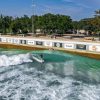
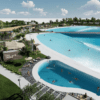

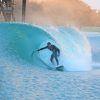

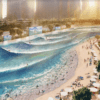
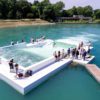

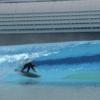

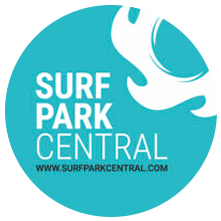


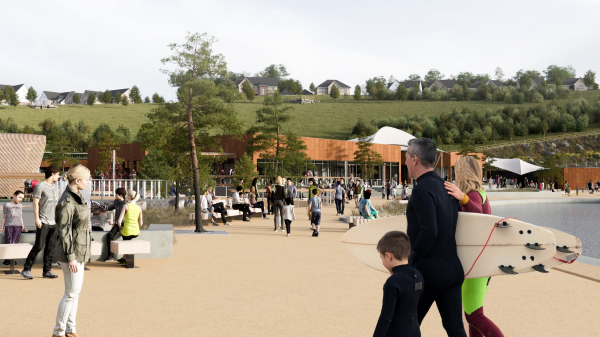

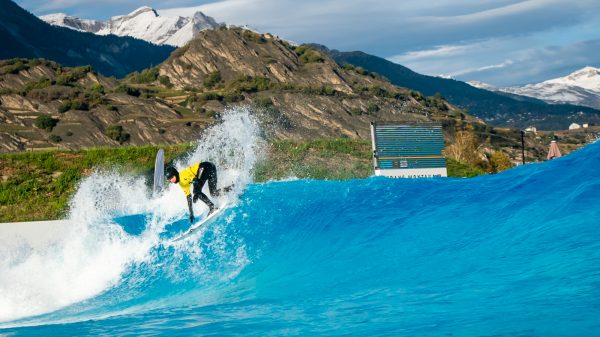
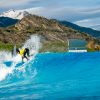
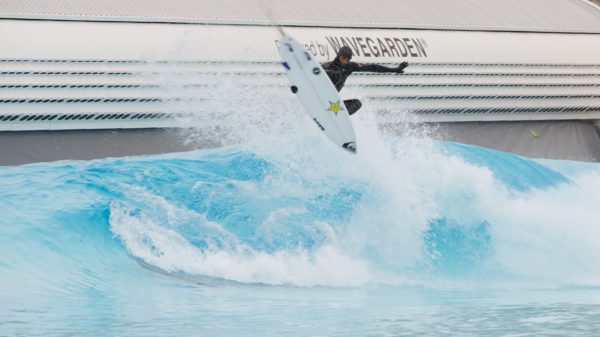
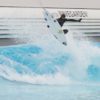
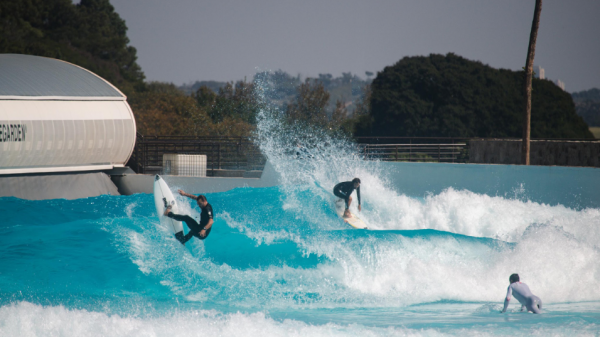
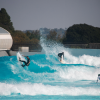
1 Comment
You must be logged in to post a comment Login